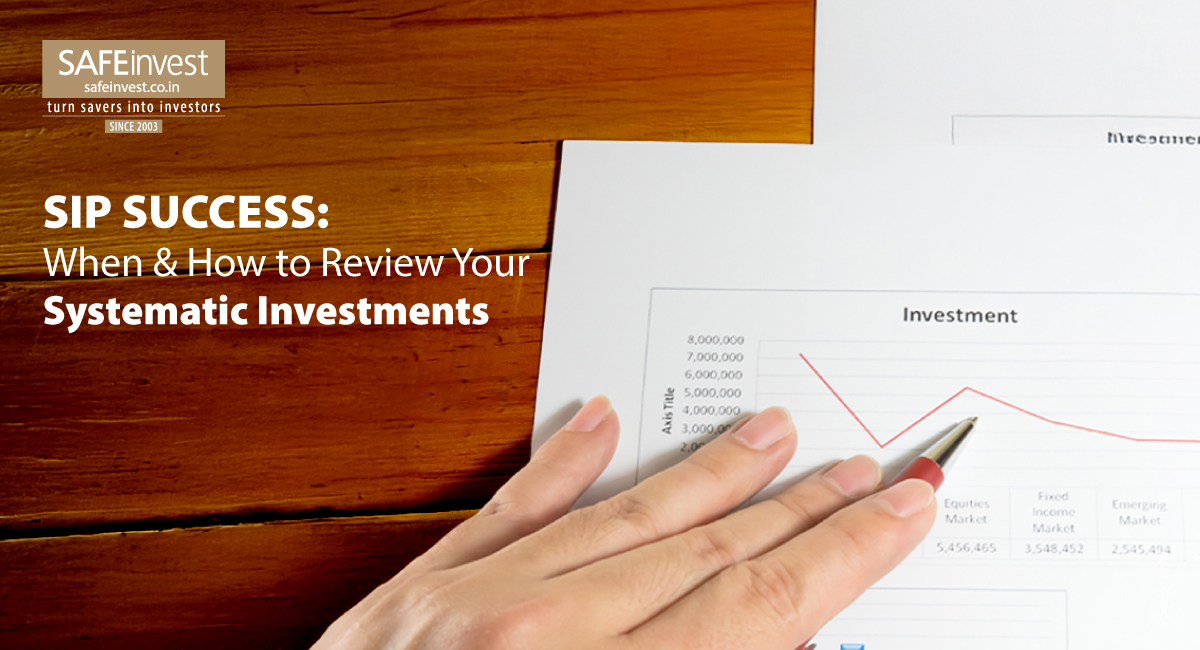SIP Success: When & How to Review Your Systematic Investments

Rohit started an SIP in 2015 to save for his daughter’s higher education. Eight years later, in 2023, when he finally checked his investments, he realised his fund had consistently underperformed compared to similar funds in the market. If he had reviewed it regularly, he could have switched earlier and reached closer to his daughter’s higher education needs. His story is a reminder that SIPs don’t just need patience; they also need periodic reviews to stay effective.
Investing regularly through a Systematic Investment Plan (SIP) is a disciplined approach to building wealth over time. In this, we will explore when and how to review your SIPs.
WHEN YOU SHOULD REVIEW YOUR SIP INVESTMENTS
Regular reviews help you stay on track and make necessary adjustments. Here’s a guideline:
- Annual Reviews: For long-term SIPs, an annual review is generally sufficient. This allows you to assess performance, rebalance your portfolio, and make informed decisions without reacting to short-term market fluctuations.
- Quarterly Reviews: If you are nearing your financial objective, such as buying a house or funding education, more frequent reviews (quarterly) can help you make timely adjustments.
- Life Events: Significant life changes like marriage, the birth of a child, or a career shift may necessitate an immediate review to realign your investments with evolving life changes.
HOW TO REVIEW YOUR SIP INVESTMENTS
A structured approach ensures a comprehensive evaluation:
- Assess Performance Against Benchmarks:
Compare your SIP's return with relevant benchmarks. If your SIP consistently underperforms over multiple periods, it might be time to reconsider the fund. - Evaluate Fund Manager’s Track Record:
A fund manager’s experience and past performance can influence a fund’s success. Research the manager’s history with the fund and their investment strategy. - Review Asset Allocation:
Ensure your SIP portfolio is diversified across different asset classes (equity, debt, hybrid) to balance risk, return, and reduce overlap across the invested mutual fund schemes. - Rebalance Your Portfolio:
Over time, certain investments may grow faster than others, causing a shift in your desired allocation. Rebalancing involves realigning your portfolio to maintain your target allocation.
PRACTICAL STEPS TO REVIEW YOUR SIPs
- Gather All Your Investment Records:
Start by collecting your SIP statements, account summaries, and mutual fund reports for the period you want to review. Having everything in one place will give you a clearer picture of how much you have invested, what returns you have earned, and whether your money is growing as expected. - Use Online Tools and Calculators:
Today, there are plenty of websites and apps that help you track mutual fund performance. These tools not only show returns but also let you compare your fund with other funds. The NJ E-Wealth Account is a digital platform where you can view your entire portfolio in one place, access detailed performance reports, compare returns with benchmarks, and even get curated portfolio suggestions. - Consult a Mutual Fund Distributor:
Numbers and charts can sometimes feel overwhelming. If you find it difficult to judge performance or don’t know whether to continue, stop, or switch funds, a mutual fund distributor can help. They can interpret the data, look at your overall financial plan, and suggest whether the investment is suitable for your financial objectives.
Think of it like visiting a doctor, you know something feels off, and the expert gives the right prescription. - Stay Updated With Market Trends and Personal Financial Needs:
Reviewing your SIPs isn’t about just looking at returns. It’s also about connecting your investments to your life. For example, if you planned for a need 10 years away but now it’s only 3 years away, your strategy should change. At the same time, keeping an eye on economic updates (like inflation, interest rate changes, or new tax rules) helps you understand the bigger picture. The idea is not to react to every news headline but to stay aware and adjust if needed.
COMMON MISTAKES TO AVOID
- Overreacting to Market Volatility: Avoid making impulsive decisions based on short-term market movements.
- Neglecting to Rebalance: Failing to adjust your portfolio can lead to increased risk and missed opportunities.
- Ignoring Fund Performance: Regularly assess your fund’s performance to ensure it aligns with your objective.
CONCLUSION
Regularly reviewing your SIP investments is crucial to ensure they align with your financial objectives and market conditions. By assessing the performance, evaluating fund managers, reviewing asset allocation, checking expense ratios, and rebalancing your portfolio, you can make informed decisions that enhance your investment journey.
Remember, consistency and informed decision-making are key to successful investing.
Happy investing!
Note: The examples provided are for illustrative purposes and may not reflect actual market conditions.
"Mutual Fund investments are subject to market risk. Read all scheme-related documents carefully."
